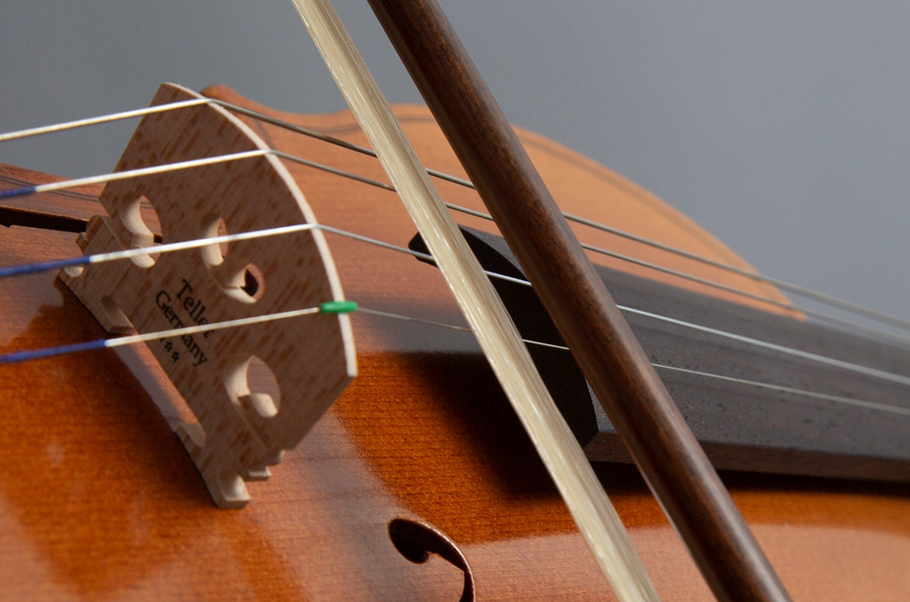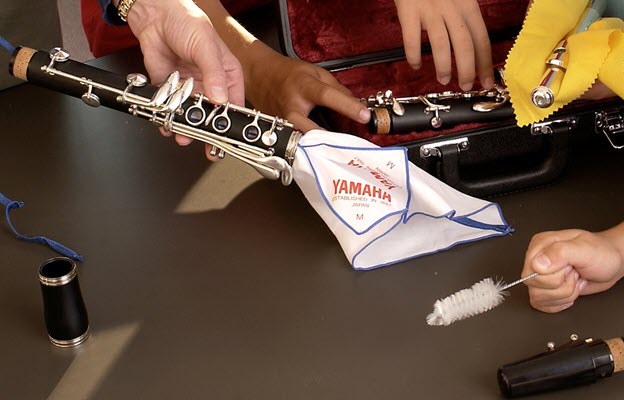Winter Weather Care for Woodwind and String Instruments
Here’s what to do when the temperatures plummet.
The late fall and winter months are the most dangerous time of year for wooden instruments, particularly if you live in the northern half of the U.S., where temperature and humidity changes are the most extreme. During this period, woodwind instruments are at a higher risk for cracking, and tenon and socket fit issues may arise. Similarly, parts of string instruments may shrink, crack or shift position at this time. Musicians must pay special attention to the effects of weather and take appropriate measures to ensure their instruments make it through the winter months.
Wood, a material that was once alive and full of water, never loses its ability to react to the moisture in its surroundings. When it absorbs water, it expands and when it dries again, it contracts. While temperature has some effect on wood, moisture has a more pronounced effect. Extreme heat causes absorbed water to evaporate and the wood shrinks rapidly. Extreme cold causes absorbed water to expand, which, in turn, causes the wood to expand as well. Wood can crack when it expands or contracts too quickly or unevenly.
How to Care for Woodwinds in Winter
Although no one can guarantee that a woodwind joint will not crack, following these recommendations will reduce the possibility significantly:
– Play the instrument gradually. Many musicians underestimate the need to break in a woodwind instrument and swab it consistently to help control moisture in the bore. When first playing a new instrument (or one that has been that has been fitted with a new replacement joint or allowed to dry out while stored for more than a few weeks), play it gradually. For example, play the instrument for 5 – 10 minutes during the first session, then swab it out, including the tenons and sockets where the end grain can absorb moisture more easily. Then after the instrument sits for at least 4 – 6 hours, play it again, adding 5 or so minutes to each session. After playing it gradually for a week to 10 days, playing for longer periods should not cause a radical change in the wood’s moisture level, and therefore is less likely to cause problems. If this strict schedule is not possible, at least be sure not to play for more than just a few minutes the first day, with a quick swab at the end of the session.
– When playing for long periods of time, swab the instrument out more frequently. A “handkerchief”-style swab will often do a better job than many other types. Having more than one swab on hand is a good way to ensure that you can pull a dry swab through instead of a damp one.
– Never attempt to force a tight swab through a joint. Before the bottom end of the swab disappears into the joint, stop pulling it through so it can still be removed from the instrument if necessary.
– Avoid playing the instrument when it is cold to the touch. It needs to warm up to the temperature of the room or outdoor environment — gradually if possible — before warm air is blown through it. Hold the instrument under a jacket or let it sit in the room for at least 20 – 30 minutes before playing.
– In dry conditions, place a small humidifier in the accessory area of the case. These are available at most music stores.
– Ensure the interior bore is properly oiled. Generally, the treated wood of a new Yamaha woodwind instrument or joint doesn’t need further treating, but if the interior bore gets a very dull, dry look, careful application of bore oil can keep the wood sealed. A properly oiled bore allows only a small amount of condensation from playing to enter the instrument. Bore oiling is best left to a skilled technician, however, as applying too much can create problems. Note: All Yamaha Duet+ clarinets and Yamaha Duet+ oboes with lined joints should never have their bores oiled due to the possibility of adverse chemical reactions.
How to Care for String Instruments in Winter
Like woodwinds, members of the acoustic violin family are also subject to the effects of changes in temperature and humidity that accompany winter weather. In northern geographical areas, the wood parts of the instrument can shrink and shift position as environments become drier due to the heating of homes and buildings — something that can even change the weight and the sound of your instrument. The further north in the U.S. you are, the more extreme the changes in temperature and humidity. In some regions, the temperature can fluctuate from 100 degrees plus with high humidity in summer to well below zero and extremely dry in the depths of winter. These huge changes pose danger to the health of your string instrument. In more temperate climates with less drastic temperature and humidity changes, there is less worry.
Here are some tips:
– Avoid quick changes in temperature. Don’t leave your string instrument out in the cold, and let the instrument slowly warm to room temperature in its case before opening the case and handling.
– Invest in a good quality hygrometer to monitor the humidity in your instrument’s environment. The storage area for a violin should ideally be kept at the same humidity year-round. The humidity of the environment in which the instrument is stored should be maintained at around 45% — or at least in the 40% to 60% range, depending on your local conditions.
– Use a furnace-mounted humidifier at your home, or a free-standing humidifier in an orchestra room. These can help keep the environment from getting too dry, which can result in cracks in the wood … unless you get lucky and the water-soluble glue in the instrument gives way to alleviate the stress, in which case the seam can usually be re-glued quite easily. There are also commercially available internal humidifiers made of rubber tubes and other materials, but these must be used with care. Too much water in these products can drip into the instrument and damage the instrument by opening seams held by water-soluble glue.
Keeping a close eye on the temperature and humidity during the winter months and taking a few simple precautions will go a long way towards maintaining the health of your woodwind and string instruments year-round. Let it snow, let it snow, let it snow!
Click here for more information about Yamaha wind instruments.
Click here for more information about Yamaha woodwind swabs and maintenance supplies.
Click here for more information about Yamaha string instruments.















